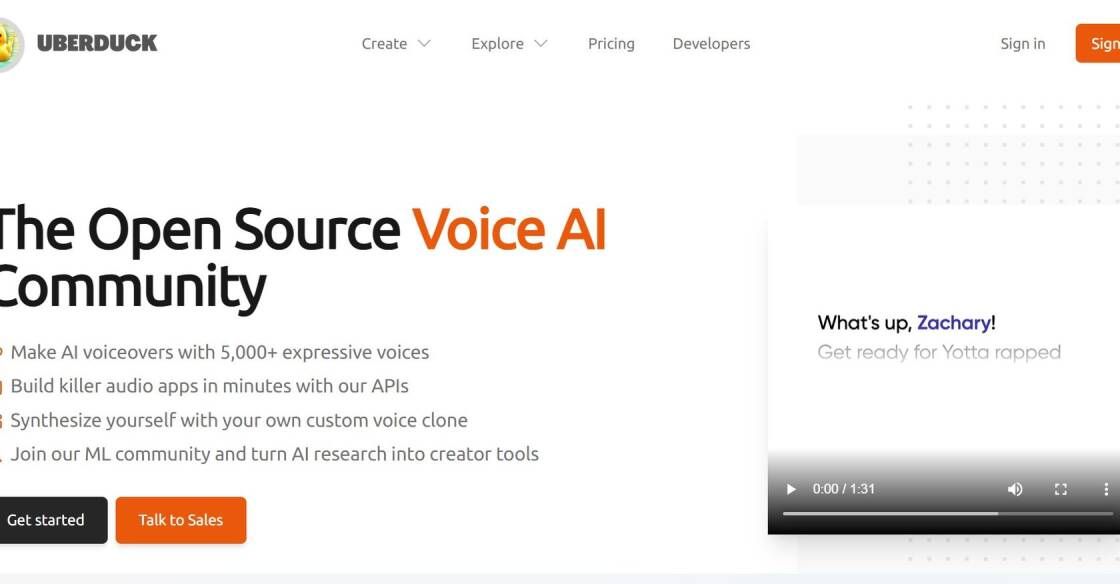

The GPT Web App Generator revolutionizes the process of developing web applications, merging the innovative capabilities of GPT with the robust Wasp full-stack framework. By seamlessly integrating these two powerful technologies, developers can now quickly and effortlessly create highly adaptable and dynamic web applications. This groundbreaking synergy between GPT and Wasp ensures that businesses and individuals can easily harness the full potential of cutting-edge web development, without compromising on speed or versatility. With the GPT Web App Generator, the possibilities are endless in crafting sophisticated and efficient web applications that cater to diverse needs and elevate user experiences.
DocuWriter.ai is a revolutionary tool that utilizes the power of artificial intelligence to simplify and streamline the process of code documentation. This innovative platform is designed to help developers and programmers save time and reduce errors when documenting code. With its advanced algorithms and intuitive features, DocuWriter.ai is poised to become a game-changer in the field of software development. Whether you are a seasoned professional or just starting out, this AI-powered tool has the potential to transform the way you approach code documentation.
RegExr is an innovative online platform designed to enhance your knowledge and understanding of regular expressions. This interactive learning and reference tool provides a comprehensive guide for users to master the intricacies of regular expressions. RegExr facilitates the creation, testing, and sharing of regular expressions through its user-friendly interface. Whether you are a beginner or an expert, RegExr offers a unique and engaging way to learn and practice regular expressions. With its wide range of features and resources, RegExr is the perfect platform for anyone who wants to take their skills to the next level.
React Patterns is a library that contains design patterns and best practices for creating React components and applications. It offers a comprehensive guide for developers to create efficient and scalable React applications by following tried and tested patterns. With the help of React Patterns, developers can easily build reusable components that are easy to maintain, test, and modify. The library provides a wealth of information on how to structure your code and use React in the best way possible. Overall, React Patterns is an invaluable resource for developers looking to improve their React skills and create high-quality applications.
Codeball is a cutting-edge code review tool that leverages the power of artificial intelligence to help development teams deliver high-quality software with greater speed and confidence. With the ability to analyze hundreds of parameters, Codeball can identify potential bugs in pull requests and assign a risk score to them. This innovative tool enables teams to detect problems early in the development process, allowing for faster resolution and more efficient delivery of software products. Codeball is revolutionizing the way that software development teams approach code review and is quickly becoming an essential tool in the industry.
Kodezi is a revolutionary tool that's changing the way programmers work. It's a grammarly-like app that's tailored specifically to programming languages. Kodezi helps users write code quickly, accurately and with fewer mistakes. It can detect errors in code, suggest improvements and provide line-by-line explanations of syntax. Whether you're an experienced programmer or a novice, Kodezi can help you take your coding skills to the next level.

AI Roguelite
AI Roguelite on Steam

Canva Text-to-Image
AI-Generated Graphics

Med-PaLM
AI Powered Medical Imaging

Namecheap Logo Maker
AI Powered Logo Creation

Media.io
Media.io - Online Free Video Editor, Converter, Compressor

TinyWow
Free AI Writing, PDF, Image, and other Online Tools - TinyWow

Uberduck
Uberduck | Text-to-speech, voice automation, synthetic media

Remini
Remini - AI Photo Enhancer
Python is a high-level programming language that has been gaining a lot of traction in the world of Artificial Intelligence (AI). Its simplicity, flexibility, and ease of use make it an ideal choice for developing AI applications. Python's popularity in the field of AI can be attributed to its vast libraries, tools, and frameworks that provide developers with a wealth of resources to create cutting-edge solutions. Python's syntax is concise and straightforward, allowing developers to write code much faster than with other programming languages. This language is widely used in machine learning, natural language processing, and computer vision applications. With Python, developers can build intelligent systems that can learn, reason, and adapt to new data. Additionally, Python has a large and active community of developers who contribute to its growth and development, making it a valuable resource for those who want to learn and master the language. In this paper, we will explore the features of Python that make it a popular choice for AI and why it is such an essential tool for developers working in this field.
Python is a high-level, interpreted programming language that is widely used for various applications including Artificial Intelligence.
Python offers extensive libraries and frameworks that make it easier to develop and deploy AI applications. It also has a simple syntax and ease of use that makes it accessible to developers of all skill levels.
Some popular AI libraries in Python include TensorFlow, PyTorch, Keras, Scikit-learn, and Pandas.
Yes, Python can be used for both machine learning and deep learning. Many of the popular AI libraries in Python support both types of learning.
No, there are other programming languages used for AI such as Java, C++, R, and MATLAB. However, Python is the most popular and widely used language for AI.
It is helpful to have some prior programming experience, but it is not necessary. Python has a simple syntax and is easy to learn, making it accessible to beginners.
Yes, there are many resources available to learn Python for AI such as online courses, tutorials, books, and forums.
Yes, Python is suitable for developing AI applications for businesses. It offers scalability and flexibility, making it ideal for large-scale AI projects.
Yes, Python is an open-source programming language and is available for free.
Yes, Python can be used for various other applications such as web development, data analysis, game development, and more.
| Language | Popularity Index (PYPL) | Popularity Index (TIOBE) | Advantages |
|---|---|---|---|
| Python | 1 | 3 | Easy to learn, readable code, vast libraries |
| R | 8 | 16 | Statistical analysis, data visualization |
| Java | 2 | 1 | Platform independence, object-oriented programming |
| MATLAB | 11 | 18 | Numerical computing, algorithm development |
| Julia | 27 | 39 | Fast performance, high-level syntax |
Python is a high-level, interpreted and general-purpose programming language that has gained immense popularity in recent years, especially in the world of Artificial Intelligence (AI). It was first introduced in 1991 by Guido van Rossum, and since then, it has become one of the most widely used programming languages in the world.
Here are some things you should know about Python if you're interested in AI:
1. Easy to Learn: Python is known for its simplicity and readability, making it easy to learn and understand even for beginners. Its syntax is straightforward and concise, which makes coding with Python much faster and easier than other programming languages.
2. Versatility: Python is an incredibly versatile language that can be used for various applications, including web development, data analysis, scientific computing, and machine learning. It has a vast collection of libraries and frameworks that can be used to build complex AI systems.
3. Large Community: Python has a massive community of developers and enthusiasts who actively contribute to its development and maintenance. This community has created numerous resources, tutorials, and documentation that make learning and working with Python much easier.
4. Powerful Libraries: One of the biggest advantages of using Python for AI is its powerful libraries. The most popular libraries for AI include TensorFlow, Keras, PyTorch, SciPy, NumPy, and Pandas. These libraries provide a range of tools and functions for data analysis, visualization, and machine learning.
5. Scalability: Python's scalability is another reason why it is widely used in AI. Python can handle large datasets, and its multiprocessing capabilities allow it to run parallel processes, making it ideal for high-performance computing.
6. Open-Source: Python is an open-source language, meaning anyone can access and use it for free. This feature has contributed significantly to its growth and popularity, as it has enabled developers to create and share code easily.
In conclusion, Python is a highly versatile and powerful programming language that has revolutionized the world of AI. Its simplicity, scalability, and wide range of libraries have made it the preferred choice for building complex AI systems. With its large community and open-source nature, Python is undoubtedly the language of the future.
TOP